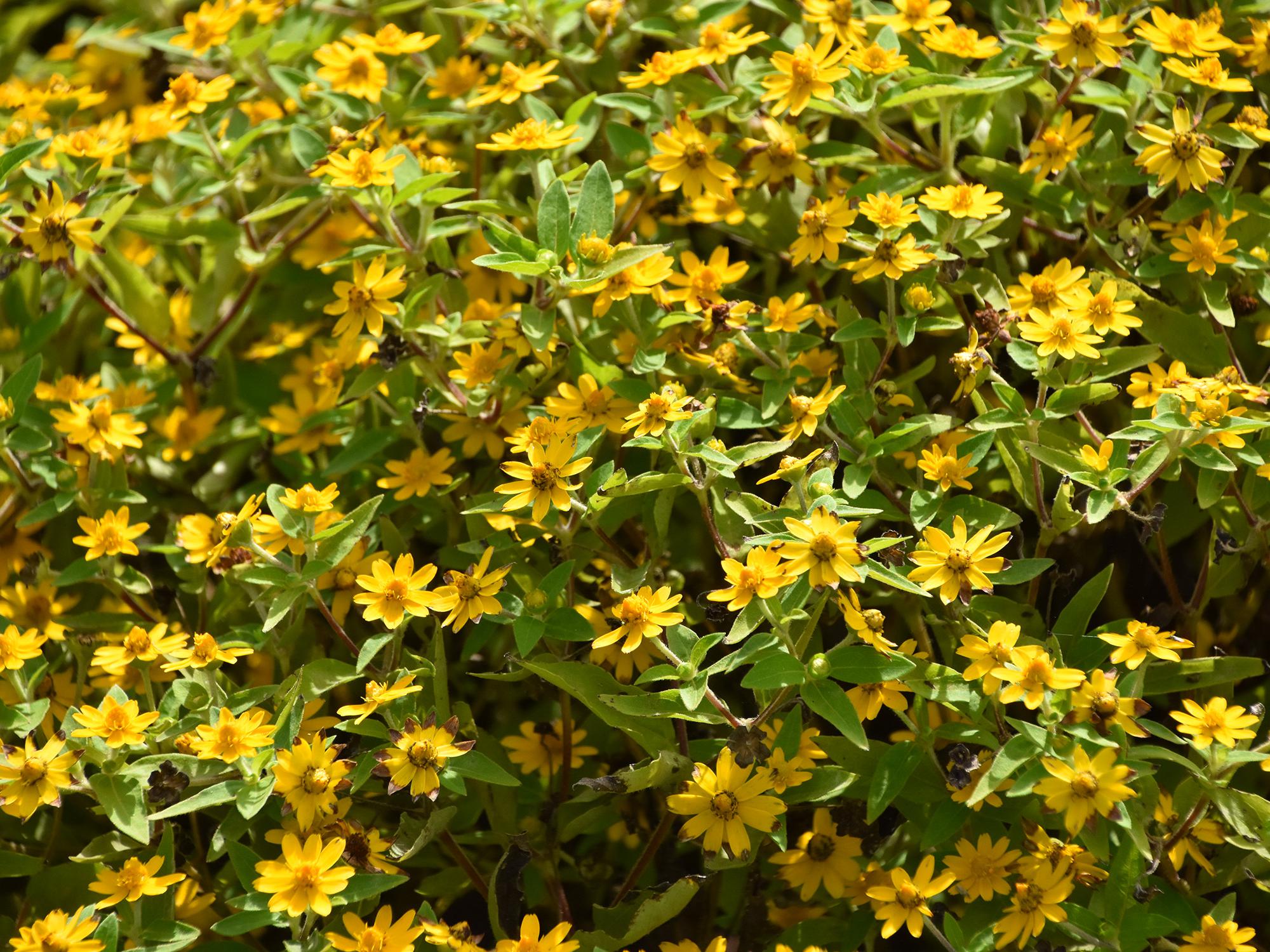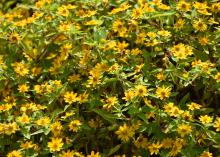Information Possibly Outdated
The information presented on this page was originally released on July 15, 2019. It may not be outdated, but please search our site for more current information. If you plan to quote or reference this information in a publication, please check with the Extension specialist or author before proceeding.
Hot summers are perfect for growing Melampodium
Let’s face it: We’re in the middle of the dog days of summer, and it’s not even August yet!
This is the time of year when my favorite Supertunias -- even my beloved Vista Bubblegum -- are starting to fade. I don’t worry because this is a yearly condition that I’ve accepted living on the Gulf Coast.
Now’s the perfect time to talk about another favorite plant that does nothing but grow like crazy in the hot, humid summer weather. Melampodium is one tough plant when it comes to flowering and just plain looking good in the heat of summer.
Melampodium is a nonstop bloomer from summer until frost. It literally bursts forth with yellow to golden daisy, star-like flowers. It requires no staking or deadheading. This is a plus when the temperatures start to soar. Melampodium prefers full sun and looks great no matter how hot and dry it is. These attributes are certainly some of the many reasons melampodium was an early Mississippi Medallion winner in 1997.
There are a couple of long-time standard varieties. One of the smaller selections is Derby, which grows 10 to 15 inches tall and wide. Medallion is the biggest in stature. It routinely forms a flowering mound 20 to 24 inches tall. My favorite selection has to be Million Gold. This heat-tolerant plant profusely produces 1½-inch flowers, even in the hot and humid conditions in Mississippi gardens.
These easy-to-grow plants are short and rounded, making them a fantastic border plant. Plant in the landscape on 8-inch centers to allow the plants to grow together and form a brilliant mass.
Melampodium likes dry conditions and makes a great container plant. Transplant into a light, well-drained soil. It is easy to grow and has few demands. Snails and slugs are the only pests that bother Melampodium. Use snail baits or sprinkle diatomaceous earth -- organic fossil remains of prehistoric algae -- to control these pests.
The flowering display of melampodium is strong enough to stand on its own, but try pairing with other yellows, reds and oranges to create a warm color scheme. One of my go-to combination plantings is melampodium and Fresh Look celosia.
One aspect of melampodium that I enjoy is the plant’s ability to produce some viable seed through the summer. These seeds will germinate and grow up in unexpected places around my garden and landscape the following year. I always leave these volunteer plants alone, as well as the seedlings of other flowering plants. I look at this as part of Mother Nature’s landscape design services.
The only problem with Melampodium is that it comes in only one color, but don’t let that stop you from enjoying it in your garden and landscape.



